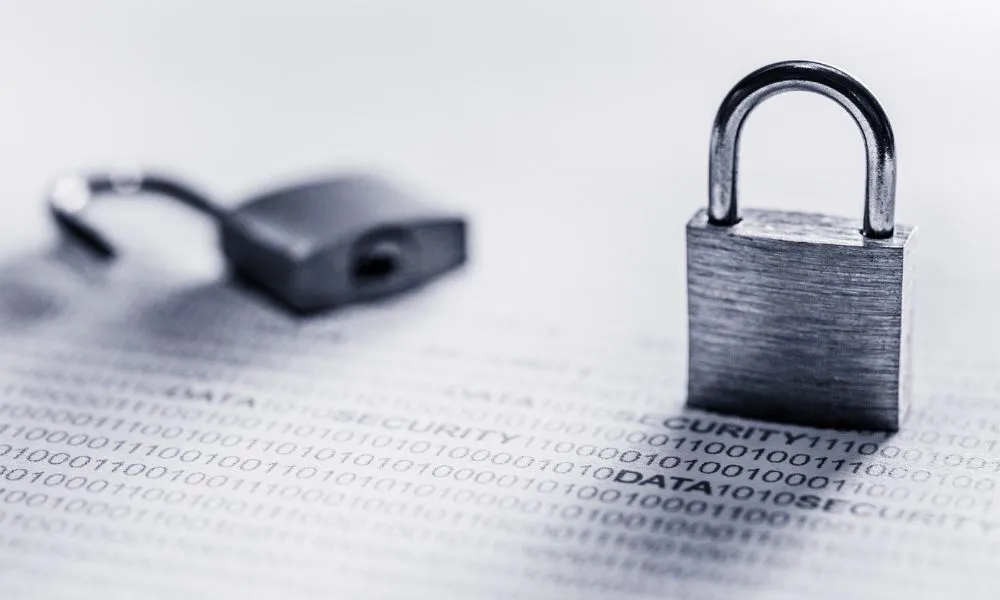Data destruction is the process of permanently erasing data stored on electronic devices to ensure that it cannot be recovered by any means, including advanced forensic technologies. This practice goes beyond simple deletion or formatting; it aims to prevent unauthorized access and mitigate data breaches and identity theft risks.
As cybercriminals develop new techniques to exploit vulnerabilities, it becomes increasingly important to securely destroy data to comply with legal requirements and protect sensitive information. This is essential to prevent financial loss, legal repercussions, and damage to reputation while maintaining trust in an ever-expanding digital world.
Risks of Insecure Data Handling
Handling data insecurely poses significant risks to any organization, impacting not just operational integrity but also legal standing and public reputation. Here’s a closer look at the dangers of insecure data practices.
Data Breaches: A Growing Concern
Data breaches have become both frequent and severe in today’s digital world. Insecure data handling can lead to unauthorized access to sensitive data, resulting in financial theft and identity fraud. The increasing sophistication of these breaches highlights the urgent need for robust data security measures.
Legal Implications of Data Mishandling
Mishandling data exposes businesses to significant legal risks. Organizations must comply with data protection laws, such as GDPR in Europe and HIPAA in the United States. Violations can result in heavy fines, legal disputes, and enforcement actions by regulatory bodies.
Reputational Damage and Trust Issues
Data breaches damage an organization’s reputation and erode trust among customers and partners. Secure data practices are essential for protecting not just data but also the company’s public image and customer relationships.

Methods of Secure Data Destruction
Secure data destruction is an essential practice for ensuring that sensitive data does not fall into the wrong hands. It encompasses a range of techniques designed to permanently eliminate data from various storage media, thereby protecting personal and corporate information from unauthorized access and potential misuse.
Physical Destruction Techniques
Shredding is a physical destruction method that ensures irreversible data destruction by cutting hard drives, disks, and other storage media into tiny, irrecoverable pieces. Degaussing complements shredding by using powerful magnets to erase magnetic data from storage media like hard drives and tapes, rendering the data unreadable and unrecoverable. For absolute data elimination, disintegration breaks down devices and media into minute particles, far beyond any possibility of reconstruction or recovery, guaranteeing total data security.
Digital Destruction Techniques
Data wiping effectively overwrites existing information on storage devices with new data multiple times, obscuring the original data. Encryption is another crucial technique, securing data by transforming readable information into encoded forms that can only be deciphered with the correct key, protecting data at rest and in transit. Additionally, secure erase is a method recommended by regulatory authorities for thoroughly removing data from storage devices by overwriting with specific patterns to ensure the data is permanently erased and beyond recovery.
Compliance and Regulations
Data protection laws globally require organizations to manage sensitive information securely from acquisition to destruction. Regulations such as the General Data Protection Regulation (GDPR) in the European Union, mandate secure handling of data from its creation to its destruction. GDPR requires that data be destroyed securely when it is no longer needed.
Compliance standards, such as ISO 27001 and the National Institute of Standards and Technology (NIST), provide guidelines for secure data management. ISO 27001 deals with comprehensive information security management, including data destruction. Meanwhile, NIST provides secure methods to erase data to prevent unauthorized recovery.
Secure Data Destruction Best Practices
Implementing best practices in secure data destruction is essential for any organization committed to safeguarding sensitive information. Establishing a data destruction policy is the first step. This policy should clearly define how and when data should be destroyed and be tailored to the organization’s specific needs and compliance requirements.
It is imperative that all staff members fully grasp the importance of data security and possess a thorough understanding of the organization’s policies regarding complete data destruction to ensure the appropriate handling of data at every stage of its lifecycle and minimize any potential risks or vulnerabilities.
Finally, secure disposal procedures must be put in place. These procedures should specify the methods and tools approved for data destruction, whether physical or digital, to prevent any possibility of unauthorized data recovery. Regular audits and updates of these procedures ensure they remain effective and compliant with the latest security standards and regulations.
Choosing the Right Data Destruction Partner
Choosing the right partner for secure data destruction services is essential for safeguarding your organization’s sensitive information.
Evaluating Vendor Certifications and Credentials
A reputable partner must possess certifications demonstrating compliance with industry standards and best practices for secure data destruction. These certifications guarantee their ability to handle sensitive information securely.
Assessing Data Destruction Processes and Technologies
Reviewing the data destruction processes and technologies your potential partner uses is essential. Ensure they employ the latest and most effective physical and digital data destruction methods. The right technologies should be able to address current security threats and align with your organization’s data security requirements.
Ensuring Compliance with Regulatory Requirements
Depending on your location and industry, your data destruction partner must help you comply with relevant legal and regulatory frameworks, such as GDPR or HIPAA. Partnering with the leading ITAD company like Exit Technologies ensures that you benefit from an effective and fully compliant data destruction process.
Benefits of Secure Data Destruction
Secure data destruction reduces security risks by effectively preventing data breaches and unauthorized access. It ensures that sensitive information, such as customer data and confidential business details, is permanently destroyed and beyond recovery, safeguarding the integrity and confidentiality of such data.
It is important to implement secure data destruction practices to demonstrate a strong commitment to privacy. This helps build trust with customers and boosts a company’s reputation by showing responsibility and a serious approach towards data privacy.
Environmental Considerations
Securely eliminating data while also taking environmental responsibility into account is known as sustainable data destruction. Shredding hard drives ensures permanent data erasure and allows the shredded materials to be recycled, reducing electronic waste and promoting the reuse of valuable materials. Responsible electronic waste management is also necessary to prevent harmful components from causing environmental damage. Programs that support e-waste recycling prevent the contamination of soil and water by toxic substances found in electronics.
Summary of Key Points
Secure data destruction is vital for safeguarding sensitive information from unauthorized access and misuse. It ensures that confidential data, once no longer needed, is destroyed in a manner that makes it completely irretrievable. This practice protects organizations against data breaches, preserves privacy, and upholds the integrity of personal and corporate information. Organizations can build trust with customers, stakeholders, and regulatory bodies by implementing secure data destruction.
Effective secure data destruction strategies combine physical and digital methods. Physical techniques like shredding, degaussing, and disintegration irreversibly destroy hardware, while digital methods such as data wiping and secure erasure completely remove all data traces from devices. Best practices also include establishing clear policies, empowering employees through thorough training, and choosing partners who adhere to the highest industry standards. Proper data destruction process is not just a strategy; it’s a commitment to integrity in the digital age.



